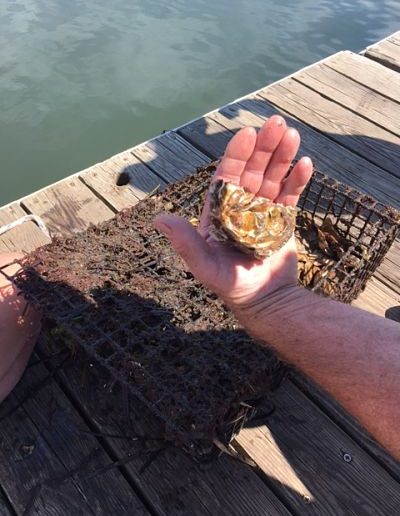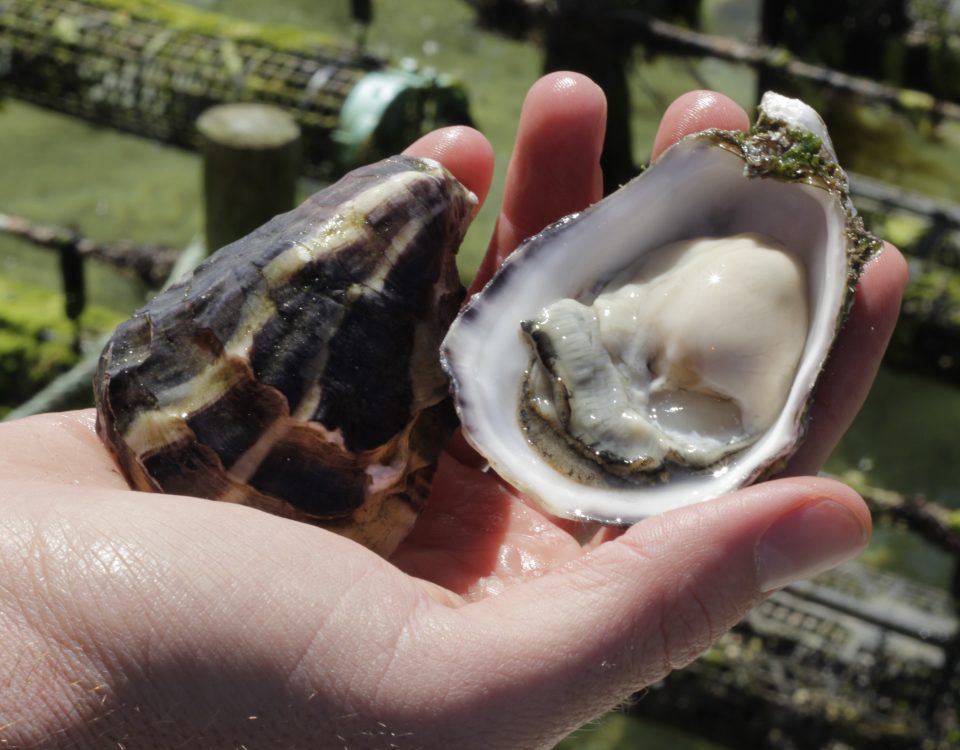

Fertilisation takes place in the water column and development continues for up to 3-4 weeks as the larval stages of the oyster swim and grow, ultimately settling on a suitable hard clean surface. Spawning is so intense during this period that the surrounding water can take on a milky appearance. Pacific oyster females can produce between 30 to 100 million eggs per spawning. During spawning, adult females disperse up to 20 million eggs and males hundreds of millions of sperms into the water when the tide and current are optimal for the widest distribution. The first spawning is usually as a male and subsequent spawnings as a female. Most oyster species, including Sydney rock oyster, change sex during their life. Pacific oysters ( Crassostrea gigas) have been commercially cultivated in Port Stephens since 1991, but are declared a noxious fish in all other NSW waters. Wallis Lake and the Hawkesbury River are the main producing areas.

Commercial production in the State occurs in 41 estuaries between Eden in the south to the Tweed River in the north. Oyster farming now employs many different techniques, all of which take place on selected sites held under about 3200 aquaculture leases, with a total current area of about 4300 hectares, which are administered by NSW DPI. Although this technique did not lend itself to local conditions, it demonstrated the potential of the Sydney rock oyster as a commercial species. Government controls were introduced and this precipitated the introduction of early cultivation practices, the first of which was the establishment of Claires (ponds) based on French cultivation techniques, by Thomas Holt in Gwawley Bay in 1872. The use of oyster shell as a source of lime in cement production resulted in natural oyster stocks being near depletion by the 1860's. With European settlement of the State and a rapidly increasing population, the demand for oysters grew quickly. Some of these middens have been carbon-dated to ten thousand years.

The Aborigines on the coastal regions feasted on oysters and shell beds can be found in the many kitchen middens along the coast. While New South Wales can trace its origins to the 19th century, use of natural stocks of oysters in the State has a much longer history. BackgroundĬultivation of oysters is far from a recent innovation, the Japanese were raising oysters as early as 2000 BC and the Romans from about 100 BC. With a current annual production of over 106 million oysters worth over $35 million, oyster farming has been the most valuable aquaculture industry in New South Wales for over 100 years. The Sydney rock oyster ( Saccostrea glomerata) is considered a gourmet's delight and is the main focus of oyster production in the State.


 0 kommentar(er)
0 kommentar(er)
